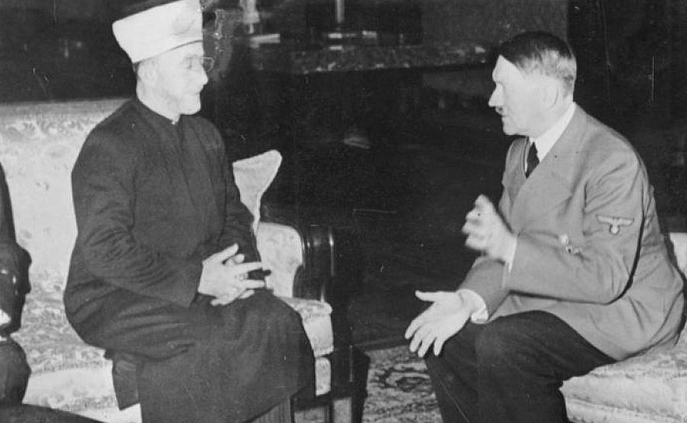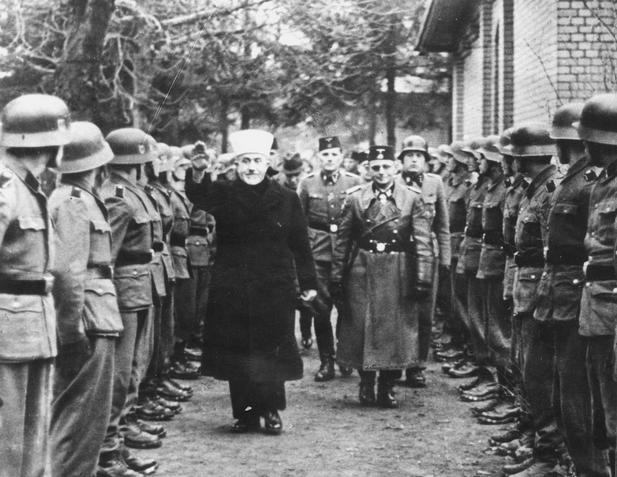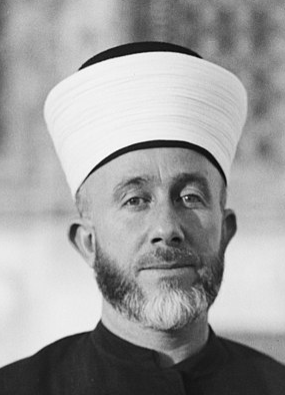- 26th April 2024
- Israel

Mervyn Bendle


Anti-Semitism keeps evolving. In its current iteration, unimaginatively known as the New Antisemitism, it retains many of the traditional tropes found in the previous five stages of Antisemitism dating back over 2000 years, and these shouldn’t need to be rehearsed here. What is innovative in its new form is the way in which these traditional libels have been welded to the dominant discourses of the far Left, so that ‘the Jew’ has been conflated with colonialism, imperialism, global capitalism, racism, apartheid, genocide and even, in the cruellest of historical inversions, with Nazism!
Having found a comfortable home on the progressivist left, the New Anti-Semitism tries to obscure its exterminationist position by speaking in code, as did the Nazis, where, e.g., ‘placing the Jews under active control’ meant transporting them to the death camps for extermination. Similarly, the New Anti-Semites insist they are not Anti-Semitic just anti-Zionist, seeking to obscure the fact that the now ubiquitous protest chant, “From the river to the sea, Palestine will be free”, is code for the destruction of Israel and the extermination of the Jewish people. While it is (barely) possible that this is not known or of much concern to all the Greens and ALP politicians, media commentators, academics, university administrators, the ACTU, school teachers, local councillors, Trotskyites, celebrity protesters, Islamist fellow-travellers, and other useful idiots who mouth this slogan, its meaning goes back at least as far the Third Reich’s racial policies, Hitler and the Nazis’ plans for the Final Solution, and the genocidal aspirations of their Arab disciples.
‘The Final Solution to the Jewish Question’ was, of course, official Nazi code for the genocide of the Jews, across Europe and beyond as far as Nazi power could reach. The plan was mapped out at the January 1942 Wannsee Conference of high level Nazi officials responsible for its implementation, but its roots lie deep in the history of Antisemitism and especially into Hitler’s own hyper-paranoid worldview. This found notorious expression in Mein Kampf , in which he fulminated about “the black-haired Jewish youth, with satanic joy in his face, lurks in wait for the unsuspecting [Aryan] maiden whom he defiles with his blood, thus stealing her from her people. With every means he tries to destroy the racial foundations of the people he has set out to subjugate.” Joseph Goebbels similarly denounced ‘the Jew’ as “the enemy of the world, the destroyer of cultures, the parasite among the peoples, the Son of Chaos, the incarnation of evil, the ferment of decomposition [and] the decay of humanity.” Such sentiments are echoed today regularly in mosques, on social media, and in protests (with apparent immunity from sanction by the police, the courts, or the AHRC), and one wonders to what extent the New Anti-Semites identify with these Nazi caricatures, or are aware where their ideological allegiances might carry them.
This could be into the abysmal depths of the vilest racism. Hitler’s was a synthesis of the key elements of the previous five forms of Antisemitism, with a particular emphasis on the Racial Antisemitism of the 19th Century. According to this, and as the above passage indicates, ‘Jewishness’ is an ineradicable and contagious corruption carried by ‘the blood’. Indeed, it was Hitler’s main objection to Christian Antisemitism that it allowed for Jews to ‘exit’ Judaism through baptism into the dominant faith, an inexcusable error that jeopardised the future of “all humanity [and] non-Jewish peoples”, as he lamented in Mein Kampf. For Hitler, “the war against the Jews was an existential matter of life and death, an ‘either-or’ question in which the future of civilisation itself was at stake.” (see Robert S. Wistrich, Hitler & the Holocaust, 2001) The possibility of a fatal ‘contagion’ persisted while even one Jew was left alive, and it was this central consideration that shaped Nazi policy towards Palestine and the possibility of a Jewish state being established there.
This policy was constrained initially by diplomatic considerations involving the Middle Eastern interests of Britain and France, but from the earliest days of the Third Reich the supreme concern of the Nazis was to rid the world of the Jews. To achieve a Judenfrei Europe through a campaign of physical extermination was being contemplated during the 1930s, but the preferred option was enforced emigration, to Palestine and/or Madagascar, where it was intended the Jews would die out under the harsh climate and the punitive rule of a police state run by a specialist detachment of Himmler’s SS. This possibility was closed off by Britain’s capacity to implement a naval blockade of German shipping, and so attention turned towards Palestine.
Ironically, this suggested a convergence of Nazi policy with the Zionist goal of an autonomous Jewish state, about which the Nazis were completely contemptuous, convinced that only the Aryan race was entitled to political sovereignty or capable of exercising it, with Hitler remarking that “if the Jews were alone in [their own nation], they would choke in filth” and be like “a pack of rats fighting one another to death.”
The leading Nazi racial theorist, Alfred Rosenberg, added the thought that Zionism was part of the Jewish global conspiracy: “a step taken by Jewish speculators to insure for themselves a new field of activities in order to exploit the world,” while the editor of the Nazi Party newspaper insisted that “Palestine is a suitable place for German Jewish immigration. They will not take root there, their fortunes will be spent and the Arabs will liquidate them. The Jews in Palestine are doomed, their end will be to leap from the frying pan into the fire.”
This contempt turned quickly to concern once the viability of the Zionist project became obvious. Soon, a German Foreign Ministry memorandum was emphasising that “the formation of a Jewish state … is not in Germany’s interest, since [it] would not [totally] absorb world Jewry, but would create an additional position of power under international law for international Jewry, somewhat like the Vatican state for political Catholicism or Moscow for the Comintern.” From this it followed that the growing Jewish presence in Palestine required a defensive alliance with the Arab world “as a counterweight against a possible increase in power for world Jewry.”

The problem here was that the Nazis categorised the Arabs along with the Jews as Semitic and therefore as untermenschlich – “painted half-apes, who want to feel the whip,” as Hitler observed in an address to his military commanders in August 1939. However, realpolitik prevailed and Hitler authorised some strategic changes to the Arabic translation of Mein Kampf, implying an exemption for the Arabs from his comprehensive Anti-Semitism. Moreover, some key Arab leaders were granted honorary Aryan status.
These included the Grand Mufti of Jerusalem, Mohammed Amin al-Husseini (right), the scion of a noble clan who trace their genealogy back to the Prophet Muhammad. Initially a champion of pan-Arabism, he shifted to Palestinian nationalism while also being an influential ally of the British authorities, who created the position of Grand Mufti especially for him. As the War approached he shifted his allegiance to the Axis powers and became the principal architect of the alliance between Nazism, Italian fascism, and Arab nationalism. His immediate goal was the elimination of any Jewish presence in Palestine, but beyond that he had far grander aims, “conceived not so much in pan-Arab as in pan-Islamic terms, for a Holy War of Islam in alliance with Germany against world Jewry, to accomplish the final solution of the Jewish problem everywhere.” (Bernard Lewis, Semites & Antisemites, 1999) Pan-Islamism was therefore linked indissolubly with the genocide of the Jews.
Historians have long debated the Grand Mufti’s decision-making role in the Holocaust, with some depicting him as a major influence on the decision to base the Final Solution on a policy of physical extermination rather than forced emigration, e.g., to Palestine or Madagascar. However that may be, it appears clear that his principal contribution was to confirm the congruence between Nazism and Islamism by offering an interpretation of Islam as intrinsically antisemitic, and by connecting that view to the antisemitic conspiracy theories of the Nazis and other European Antisemites. He then propagated this view through the Nazi’s Arabic language propaganda in the Middle East and North Africa during WWII and the Holocaust.
An alliance with Nazism and the Fascist powers appealed to nationalistic Arabic intellectuals. As Sami al-jundi, one of its early leaders of the Ba’ath Party recalled: “Whoever has lived during this period in Damascus will appreciate the inclination of the Arab people to Nazism, for Nazism was the power which could serve as their champion,” especially against the Jews. Importantly, they made themselves familiar with its ideological roots: “We were racialists, admiring Nazism, reading its books and the source of its thought, particularly Nietzsche’s Thus Spake Zarathustra, Fichte’s Addresses to the German Nation, and H. S. Chamberlain’s Foundations of the Nineteenth Century, which revolves around race”, as does Rosenberg’s bestselling Myth of the Twentieth Century, of which they were also devotees. Consequently: “We were the first to think of translating Mein Kampf.” Various Arab political parties, e.g., Young Egypt, were established to implement this radical racialist ideology and these enthusiastically endorsed the 1934 Nuremberg Laws, which disenfranchised German Jews not only politically and socially, but from the human race itself. Locally, they adopted the Nazi strategy of mobilizing gangs of toughs to beat up, terrorize, intimidate, and silence opponents, critics, and especially the Jews.
It was in this context that the Grand Mufti moved to centre stage as part of the strategy to ally Arab nationalism and socialism with National Socialism. He played a leading role in establishing a strongly pro-Nazi regime in Iraq in 1940 and then tried to extend this into Syria with German assistance, fleeing to Iran when the attempted coup was suppressed. From there he escaped to Italy where he was warmly welcomed by Mussolini. He then proposed, on behalf of a secret Arab political network, an alliance with the Axis powers against Britain, “on the sole condition that they recognise in principle the unity, independence, and sovereignty of an Arab state of a Fascist nature, including Iraq, Syria, Palestine, and Trans-Jordan. Agreeing to the proposal, Mussolini confirmed that there would be no Jewish homeland in Palestine and, indeed, that the Jews would have no place whatsoever in the Fascist post-war world.
Hitler was the Grand Mufti’s next call. The Führer already had a positive attitude towards Islam, remarking in a speech that “the peoples of Islam will always be closer to us than, for example, France”, because of their warrior spirit. As he explained in his Table Talk: “Had Charles Martel not been victorious at Poitiers … we should in all probability have been converted to Mohammedanism, that cult which glorifies heroism and opens up the seventh Heaven to the bold warrior alone.” With this injection of Islam, “the Germanic races would have conquered the world.” In his meeting with the Grand Mufti of November 28, 1941, Hitler emphasized that “the foundations of the bitter struggle that he was waging were clear. He was waging an uncompromising struggle against the Jews. To this belonged the struggle against the Jewish settlements in Palestine, because by this means the Jews wanted to create a state base for their destructive activities in other countries.” Hitler therefore made clear the Nazis’ determination to destroy any Jewish homeland, and he assured the Grand Mufti that the decisive moment was approaching, and that “in that hour [he] would be the most authoritative spokesman for the Arab world. It would then be his task to set off the Arab operations, which he had secretly prepared.”
In return, the Grand Mufti worked with other Arab leaders to mobilize Arab support for the Nazis; organized Muslim enlistment in the German Army (above); helped plan military operations, including parachuting Nazi agents into Palestine to foment attacks on the Jews; and promoted the formation of the three Waffen SS divisions made up of Muslim volunteers from Bosnia and Herzegovina that went on to play a major role in the extermination of Yugoslavian Jewry. He also wrote to the governments of European countries not already under complete Nazi domination, insisting that they prohibit the emigration of their Jewish citizens. Not only did this help curtail Jewish settlement in Palestine, it also made it much easier for the Nazis to gather up the Jews as part of the Final Solution.
The Grand Mufti commonly referred to the Jews so collected as being “under active control”, and he was fully aware that this was code for extermination as he had become a friend of Himmler and Adolf Eichmann, and had gone with Eichmann to visit Auschwitz, facts that led after the War to attempts to have him tried as a war criminal at Nuremberg.

He avoided this fate, even though he’d been the most prominent Arab collaborator with the Axis powers, because the victorious Allies had little interest at the time in the Jewish question. Instead, he joined other pro-Nazi activists, including Nasser and Sadat, in Egypt at a time when it was a haven for Nazi war criminals on the run, and from which they could continue the war against the Jews in the Middle East and more generally. As a leading historian remarks of the post-war years: “the militant leaders of Arab nationalism … saw in Hitler’s Germany the model of successful nationalism or national socialism, and an inspiring guide and helper in the struggle against their two great enemies, the West and the Jews.” (Lewis, Semites & Antisemites) Amongst Arab nationalists and Islamists there has never been a moment’s let-up in this war, in which Israel has always been the frontline state.
This was made clear at the time of Israel’s establishment, when Azzam Pasha (left), the first Secretary-General of the Arab League, declared that the up-coming 1948 Arab-Israeli War will be “a war of extermination and momentous massacre which will be spoken of like the Mongolian massacre and the Crusades”, a view echoed by the leader of the Arab Women’s Organization: [Israel] has no chance to survive now that the ‘Holy War’ has been declared. All the Jews will eventually be massacred”, and there were a series of pogroms across the Muslim world, killing and executing hundreds, injuring thousands, and destroying scores of synagogues, hospitals, and businesses. Meanwhile, Saudi Arabia’s King Ibn Saud emphasized to US President Harry Truman, that “the Arabs have definitely decided to oppose [the] establishment of a Jewish state [and they] will isolate such a state from the world and will lay siege until it dies by famine … Its end will be the same as that of [the] Crusader states.”
Against all odds, the Israelis won that war and the defeat lingered as a never-healing lesion on the Arab body politic: how was it that the Jews, a legally inferior class of persons (dhimmis), could have their own state in which they would rule over Muslims? Addressing the UN General Assembly in September 1960, Nasser declared: “The only solution to Palestine is that matters should return to the condition prevailing before the error was committed, i.e., the annulment of Israel’s existence”, and in 1964, he vowed, “We swear to God that we shall not rest until we restore the Arab nation to Palestine and Palestine to the Arab nation … There is no room for Israel within the Arab nation.” Then, in 1965, ahead of the surprise attack that led to the Six-Day War of 1967, he declared, “We shall not enter Palestine with its soil covered in sand, we shall enter it with its soil saturated in blood.”
The humiliating Arab defeat in that war only strengthened the exterminationist policy towards Israel that the Arabs and Muslim world have come to share with the Nazis, and which has been the dominant position ever since.
This has been clearly stated, e.g., on many occasions by Iran’s supreme leader, Ali Khamenei, who declared in 2000 that “the cancerous tumour called Israel must be uprooted from the region”, in 2001 that “the perpetual subject of Iran is the elimination of Israel from the region”, while in 2013 he denounced Israel as an “illegitimate regime [led by] untouchable rabid dogs [who] cannot be called human beings” and whose country is “doomed to failure and annihilation”. In 2014 he issued a nine-point plan for Israel’s elimination. Party to this is, of course, Hamas, whose 1988 Charter echoed the paranoid Hitlerian view of ‘the Jew’ (i.e., not just Israel but all Jews collectively) as the sinister power responsible for various global ills, including the disintegration of the Ottoman Empire, the two world wars, and the failure of Islam to achieve its rightful hegemonic position in the world. Israel’s annihilation is forecast to occur by 2027. Consistent with this, Ghazi Hamad, a member of Hamas’s political bureau, declared during the present Israel-Hamas War that the murderous October 7 attack, involving the deliberate murder of children, was completely justified and only the first of a series that will lead to the complete elimination of Israel. Similar positions are held by the Palestine Liberation Organization, Hezbollah, Palestinian Islamic Jihad, Al-Qaeda, and more recently, by Houthi Islamists in Yemen, whose motto is: “God is the greatest, Death to America, Death to Israel, Curse on the Jews, Victory to Islam!”
HOW HAS IT come about that the progressivist Left has so fervently adopted the Anti-Semitic, exterminationist position towards Israel, aligning itself not only with Nazism, but with extremely reactionary theocratic regimes and religious ideologies? Several reasons can briefly be noted:
(1) Fundamentalism and all that flows from it is hegemonic in the Muslim world and this dictates a highly negative view of the Jewish people.
(2) As Walter Laqueur observes in The Changing Face of Antisemitism (2006), immigration from Muslim countries has created a new constituency for the left, which it is anxious to exploit as its traditional working-class base dissolves.
(3) These issues are compounded in the Australian context by the failure of multiculturalism to achieve the necessary level of social and cultural integration, and the emergence of ‘tribes’ that do not identify with or feel any allegiance to liberal democratic values upon which our society has traditionally been based.
(4) Vast resources have been poured into targeting these constituencies through social media, which is the major agit-prop arm of the New Antisemitism.
(5) Such campaigns have been particularly successful because the far-left has ideological control of the education system, beginning with the universities and their arts, humanities, social science, media and communication, and teacher training departments.
(6) Associated with this is the perennial generational conflict and alienation of youth that has historically been exploited by radical movements.
(7) All of this is under the hegemonic influence of the anti-Western neo-Marxism of the New Left, which entered into an infernal coalition with extremist Middle-Eastern groups during the Age of International Terrorism (c.1960s-80s), and this close association has been maintained throughout the Age of Religious Terrorism (1979>).
But above all else, there is the refusal to acknowledge the value and values of Western Civilisation, but to subject it instead to endless, remorseless, destructive, and inaccurate self-criticism. And this is occurring at a time when it is locked in a battle of survival, in which defeat will plunge the world into a dark age from which it might never emerge. In this war, Israel is the front-line state, which is why it is being specifically targeted and why it must be supported.